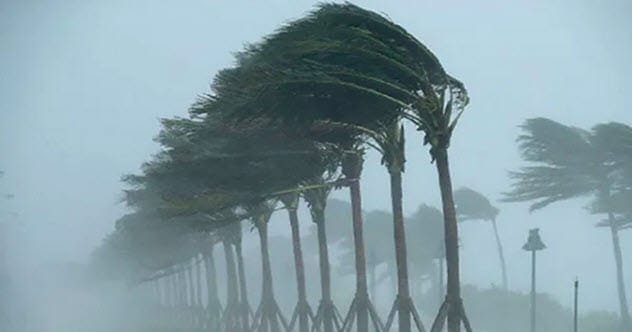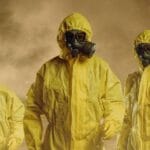Sometimes, tragedies do more than just cause death and destruction. They can also overshadow other significant events, making it difficult to fully grasp the scope of concurrent crises. Major disasters like wars, devastating hurricanes, and shocking assassinations tend to dominate our attention, pushing other events into the background. Here are ten catastrophes that, to varying degrees, were overshadowed by more prominent events.
Uncivil: The Sand Creek Massacre
During the Civil War, the U.S. Army was primarily occupied with fighting itself, which inadvertently provided some respite for America’s Native population. However, there were exceptions, such as the four-month conflict with the Dakota people in 1862. This conflict, along with the lesser-known 1864-65 Colorado War, paled in comparison to the Civil War’s major battles and the Emancipation Proclamation.
The Colorado War included one particularly horrific event: the Sand Creek Massacre. On November 29, 1864, Colonel John Chivington led 675 men into Indian territory, attacking Black Kettle’s village, which was flying both an American flag and a white flag of truce. The soldiers murdered around 230 Native Americans, mostly unarmed women, children, and the elderly. Chivington’s unrepentant stance, declaring his intention to kill Indians by any means, led to a military investigation, though he was never truly held accountable.
The SS Mendi: 600 Dead in a Desensitized Nation
The sinking of the SS Mendi is one of the UK’s deadliest, yet least recognized, maritime disasters, primarily due to its timing and the composition of its passengers. On February 21, 1917, the SS Mendi, a troop transport ship, was accidentally rammed by the cargo ship Darro in dense fog. Over 600 lives were lost as the Mendi sank rapidly.
The tragedy occurred during World War I, a period marked by immense loss. After the Battle of the Somme in 1916, where the British suffered staggering casualties, the loss of 600 men in a maritime accident barely registered. Adding to the obscurity, the majority of the Mendi’s occupants were black African soldiers, many of whom couldn’t swim and were unfamiliar with the sea, further contributing to the high death toll.
A Deadly Secret
In July 1945, the USS Indianapolis completed a top-secret mission, delivering enriched uranium for the atomic bomb dropped on Hiroshima. Shortly after, on July 30, the ship was struck by two Japanese torpedoes and sank within minutes, leaving approximately 900 sailors adrift at sea.
Tragically, the Navy didn’t realize the ship was missing for three and a half days. By the time survivors were spotted, only 316 men were still alive, with the rest succumbing to drowning, hypothermia, shark attacks, and delirium. Overshadowed by the atomic bombing of Hiroshima just four days after the survivors were rescued, the Indianapolis disaster remained largely unknown until years later.
An Assassin Changes a Nation’s Narrative
Early 1968 saw a series of events that significantly altered the course of the United States’ involvement in the Vietnam War. The Tet Offensive in late January, Walter Cronkite’s declaration of the war as a stalemate in February, and President Lyndon Johnson’s announcement in March that he wouldn’t seek reelection all pointed to a turning point.
However, the assassination of Martin Luther King Jr. on April 4, 1968, shifted the nation’s focus. The ensuing riots, protests, and mourning redirected attention from the Vietnam War to America’s deep-seated issues of racial discrimination and violence. King’s murder interrupted a crucial reckoning with the failed war, highlighting the nation’s internal strife instead.
The Juice vs. The Genocide
In June 1994, America’s attention was divided between two starkly different tragedies: the Rwandan genocide and the O.J. Simpson murder case. While 800,000 people were being massacred in Rwanda, much of the world was engrossed in the unfolding drama of O.J. Simpson’s arrest for the murders of Nicole Brown-Simpson and Ronald Goldman.
The O.J. Simpson case dominated media coverage, overshadowing the horrific ethnic cleansing in Rwanda. The international community’s inadequate response to the genocide further highlighted the skewed priorities, as the world seemed more captivated by a celebrity scandal than a humanitarian crisis.
NYC’s Deadliest Plane Crash of 2001 was… in November?
On November 12, 2001, just two months after the September 11 attacks, American Airlines Flight 587 crashed in Belle Harbor, Queens, killing 260 people. This tragedy would have been the biggest disaster in any other year, but in the wake of 9/11, it was largely overshadowed.
Initially, there were fears of another terrorist attack, but the crash was attributed to the pilot’s overuse of rudder controls, causing the vertical stabilizer to snap off. Despite the significant loss of life, the prevailing atmosphere of fear and grief following 9/11 diminished the attention given to this devastating accident.
Hurricane Who?
In 2005, Hurricanes Rita and Wilma, both powerful and destructive storms, were largely overshadowed by Hurricane Katrina. Katrina’s direct hit on New Orleans and the subsequent levee failures led to widespread flooding and devastation, capturing the world’s attention.
While Rita and Wilma caused significant damage and fatalities, they couldn’t compete with the sheer scale and emotional impact of Katrina. The images of desperate citizens stranded in a flooded city became symbolic of America’s perceived failures and social inequalities, overshadowing the other hurricanes that year.
26/11?
From November 26, 2008, a series of coordinated terrorist attacks struck Mumbai, India. Ten members of Lashkar-e-Taiba carried out 12 coordinated shooting and bombing attacks across the city, targeting civilians at cafes, railway stations, and hotels, resulting in 174 deaths.
While the world condemned the attacks, the tragedy was overshadowed by the escalating global financial crisis. As markets tanked and job losses soared, the Western world was more focused on its economic woes than the devastating attacks in Mumbai. The Mumbai attacks, often referred to as 26/11 in India, became a secondary headline in the face of global financial turmoil.
Australia Burns as the World Melts Down
During the 2008-09 financial crisis, as countries around the globe struggled with massive job losses and economic instability, Australia experienced its deadliest wildfire ever. In early February 2009, a series of fires ignited across Victoria, exacerbated by a brutal heatwave.
On February 7, known as Black Saturday, approximately 400 fires were recorded, leading to over a million acres being burned. Fueled by high winds, the fires spread rapidly, resulting in 173 deaths and over 400 injuries. Despite the catastrophic impact, the Australian wildfires were largely overshadowed by the pervasive global financial crisis.
The Other Mass Killer from China
While COVID-19’s origins are traceable to China, another deadly issue linked to the region is the rise in deaths attributed to fentanyl, a synthetic opioid. Fentanyl has significantly contributed to the ongoing overdose epidemic, with deaths involving synthetic opioids increasing dramatically.
The accessibility, low cost, and high potency of fentanyl have made it a primary driver of overdose deaths in the US, UK, Europe, and Canada. Often manufactured in China and distributed via the black market, fentanyl’s impact has been overshadowed by the more visible and globally disruptive COVID-19 pandemic, yet its deadly consequences are equally devastating.
History is full of events, both large and small, that shape the world. Sometimes, the magnitude of one event overshadows others, leading to a skewed perception of the past. Recognizing these overshadowed tragedies allows us to gain a fuller understanding of the complexities of our world.
What do you think about these overshadowed catastrophes? Leave your comments below!










